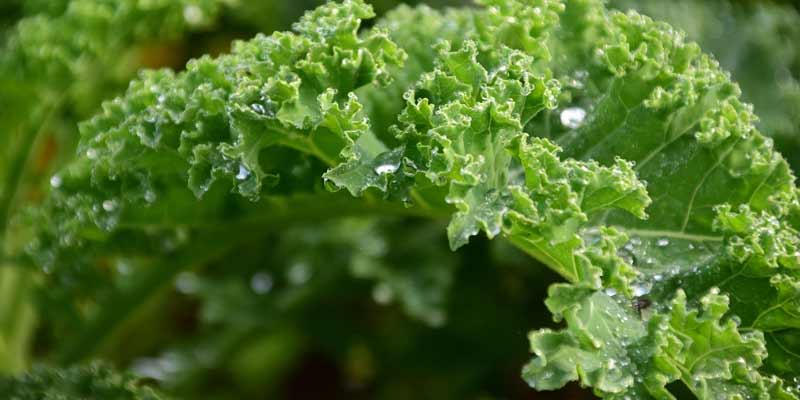With its robust nutritional profile and versatility in the kitchen, kale has charmed health-conscious individuals and culinary enthusiasts alike. Whether one garden or cultivates it in containers, understanding watering intricacies proves crucial to ensure a bountiful harvest with vibrant, nutrient-packed leaves.
This comprehensive guide explores factors influencing kale’s water needs while providing practical insights into optimal watering frequency for this resilient leafy green.
Understanding the Kale Plant
To truly understand the intricacies of watering, one must first comprehend the fundamental properties of kale. A leafy green vegetable belonging to the Brassica family; it is known for being cold-hardy and rich in nutrients—specifically vitamins A, C, and K—and an array of minerals.
Kale manifests itself in numerous varieties – curly kale; lacinato (or dinosaur) kale – each offering its distinct flavor profile and texture. Red Russian Kale represents another variant with unique taste characteristics as well as textural features.
5 Factors Influencing Watering Needs
1. Soil Type and Quality
Determining the optimal watering frequency for kale hinges on the soil’s type and quality, which is crucial to maintaining a well-draining environment. Kale roots are vulnerable to rot in excessively wet conditions, thus necessitating essential precautions against waterlogging. The optimum balance between water retention and drainage can be achieved by enriching loamy soils with organic matter.
2. Climate and Weather Conditions
Local climate and prevailing weather conditions wield significant influence over kale’s watering requirements: in hot, dry climates where evaporation poses a constant threat to hydration, more frequent watering becomes imperative. Conversely, cooler or more humid environments allow for reduced frequency of irrigation.
3. Growth Stage of Kale
Another crucial factor in determining watering needs is the growth stage of kale. Young kale plants, particularly those that have recently been transplanted or newly sprouted from seeds, demand more consistent moisture to establish robust root systems. As maturation occurs for kale, its water requirements may evolve and necessitate a reduced frequency during cooler periods or when transitioning into flowering stages.
4. Container vs. Ground Cultivation
The growth method of kale whether in containers or directly in the ground will directly impact its water requirements, specifically, container-grown kale tends to dry out more rapidly. To sustain optimal moisture levels, it demands frequent watering. However; when cultivated within the soil itself (in-ground), kale can access a greater volume of moisture from the earth; nevertheless, diligent monitoring remains requisite for both scenarios.
5. Mulching for Moisture Retention
To enhance moisture retention, suppress weeds, and regulate soil temperature, a smart practice is applying an organic mulch layer around kale plants. Mulching—by conserving water and contributing to overall soil health—notably reduces the necessity for frequent watering; thus re-establishing equilibrium within the ecosystem of your garden.
Guidelines for Watering Kale
1. Establishing a Watering Routine
When watering kale, the key emphasis lies in consistency: establish an unwavering routine, a regularity that ensures a steady supply of moisture. However; be cautious not to induce water stress or permit the soil’s complete dehydration. Your routine should cater specifically to your climate and growing conditions which is the ideal target.
2. Morning Watering
Generally, it is recommended to water kale in the morning. Morning irrigation facilitates rapid leaf drying, thereby decreasing the likelihood of fungal diseases. Moreover; hydrating with morning moisture equips the plant for confronting daytime heat–an essential strategy for its survival.
3. Checking Soil Moisture
To gauge the water needs of kale, you must regularly check soil moisture. Insert your finger into the soil – penetrating up to the first knuckle and if it feels dry, that is an indication of watering. Be vigilant towards variations in soil moisture levels; adapt your plant’s watering routine accordingly as its needs evolve.
4. Young Kale Plants
Especially in their early growth stages, young kale plants necessitate more consistent moisture. Therefore, maintaining the soil’s consistent moistness to facilitate robust root establishment; is crucial for optimal development, an aspect that cannot be overlooked.
Upon achieving well-established status, adapt your watering routine according to the specific growth stage of these resilient little greens and prevalent environmental conditions, this will ensure sturdier health maintenance—essential for any thriving flora!
5. Adjusting Watering Frequency
Adjust your watering routine adaptively base the frequency on weather patterns, temperature fluctuations, and seasonal changes. Increase the watering frequency during hot spells or dry periods; conversely, in cooler or rainy seasons reduce it to avert waterlogged soil.
6. Deep Watering Technique
To promote deeper root penetration into the soil, employ a technique of deep watering for your kale. Shallow watering might induce superficial root systems, thereby increasing the plant’s vulnerability to stress in dry periods.
7. Drought Tolerance of Kale
Once established, the sturdy and deep-rooted nature of Kale grants it relative drought tolerance. Yet, to yield tender flavorful leaves and achieve optimal growth consistent moisture is still essential. Remember: Drought tolerance differs among various kale varieties; this is an important consideration.
8. Monitoring Container-Grown Kale
When you grow kale in containers, monitor the soil moisture levels closely; they have a tendency to dry out more rapidly. Moreover, during hot weather, owing to limited soil volume, container plants may necessitate increased watering frequency.
In addition, kale needs plenty of space to grow its roots so it’s important to have a large container.
Conclusion
To cultivate kale optimally, one must engage in a nuanced watering process: this demands attention to detail and an understanding of the leafy green’s unique requirements. Factors such as soil quality, climate variation, growth stage, and even cultivation method—are all pivotal in formulating your bespoke routine for watering; it is through these considerations that you can foster health and productivity within your kale plants.
As you embark on this culinary journey featuring kale–a versatile superfood–keep in mind: a well-hydrated plant not only produces nutritious leaves but also contributes dramatically more robustly vibrant additions either to your garden or directly onto plates within your kitchen.



